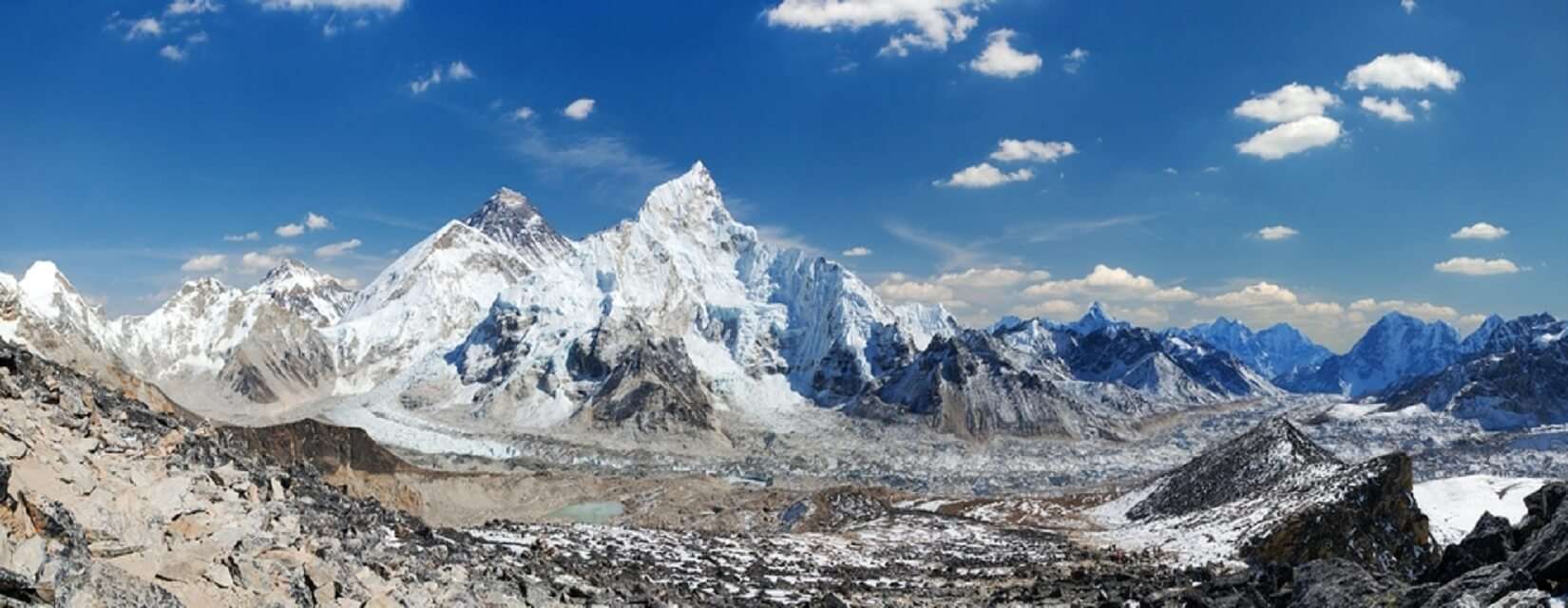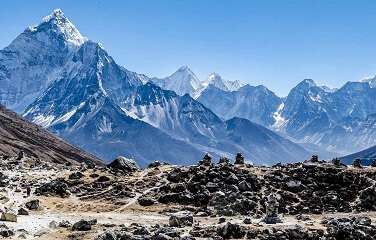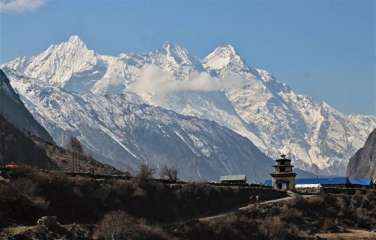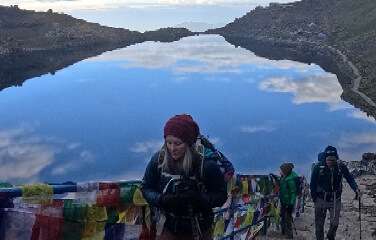Best Trekking Routes in Nepal
Everest Base Camp Trek

The Everest Base Camp (EBC) Trek is perhaps the most iconic trekking route in the world, drawing thousands of adventurers annually. Starting from Lukla, the trail passes through vibrant Sherpa villages, rhododendron forests, and high-altitude landscapes. Key highlights include Namche Bazaar, Tengboche Monastery, and, of course, the base camp of the world's highest peak, Mount Everest.
- Duration: 12-14 days
- Difficulty: Moderate to Strenuous
- Best Time to Trek: March to May and September to November
Annapurna Base Camp Trek

The Annapurna Base Camp (ABC) trek, often hailed as one of the most beautiful treks in the world, offers a blend of spectacular high mountains, diverse ecosystems, and rich cultural heritage. Nestled in the heart of Nepal, this trek brings adventurers to the foot of the majestic Annapurna Massif, providing an unforgettable experience for both seasoned trekkers and enthusiastic beginners.
- Duration: 7-12 days
- Starting Point: Nayapul (near Pokhara)
- Maximum Elevation: 4,130 meters (13,549 feet)
- Trek Difficulty: Moderate
- Best Seasons: Spring (March to May) and Autumn (September to November)
Scenic Beauty
The ABC trek is renowned for its stunning landscapes. Starting from lush subtropical forests, the trail gradually ascends through terraced rice paddies and alpine meadows to reach the high glacial basins. The highlight is the panoramic view of the Annapurna range, including peaks like Annapurna I (8,091 meters), Annapurna South, Hiunchuli, and the sacred Machapuchare (Fishtail Mountain). Each step offers new vistas, from rhododendron forests blooming in spring to the clear, crisp skies of autumn.
Cultural Experience
One of the trek's unique aspects is the opportunity to immerse yourself in the culture of the Gurung and Magar communities. These ethnic groups are known for their hospitality, and staying in local teahouses offers a glimpse into their daily lives. Villages like Ghandruk and Chomrong provide cultural insights, with traditional dances, local cuisine, and the chance to learn about the history and traditions of these communities. The trek also passes through several Buddhist monasteries and Hindu shrines, reflecting the spiritual diversity of the region.
Itinerary
A typical itinerary for the ABC trek can vary, but here is a sample 10-day plan:
Day 1: Pokhara to Nayapul and trek to Tikhedhunga
A short drive from Pokhara takes you to Nayapul, the starting point of the trek. The initial walk is relatively easy, passing through charming villages and lush forests.
Day 2: Tikhedhunga to Ghorepani
This day involves a steep climb up to Ulleri and then a gradual ascent to Ghorepani. The village of Ghorepani is a popular stop, known for its breathtaking views of the surrounding peaks.
Day 3: Ghorepani to Tadapani (via Poon Hill)
An early morning hike to Poon Hill offers one of the most spectacular sunrises over the Himalayas. After soaking in the views, the trail continues to Tadapani through dense rhododendron forests.
Day 4: Tadapani to Chomrong
The trail descends through forests and terraced fields to the village of Chomrong, which provides stunning views of Annapurna South and Machapuchare.
Day 5: Chomrong to Dovan
This part of the trek involves descending to the Chomrong Khola and then climbing up through bamboo and rhododendron forests to Dovan.
Day 6: Dovan to Deurali
The trail continues through the forest, gradually ascending to Deurali. This area is known for its wildlife, including pheasants and mountain goats.
Day 7: Deurali to Annapurna Base Camp via Machapuchare Base Camp
This is one of the most exciting days, as the trail climbs up to Machapuchare Base Camp and then continues to Annapurna Base Camp. The sanctuary, surrounded by towering peaks, offers awe-inspiring views.
Day 8: Explore ABC and trek back to Bamboo
After exploring the base camp and taking in the breathtaking scenery, the trek heads back down to Bamboo.
Day 9: Bamboo to Jhinu Danda (hot springs)
The trek continues to Jhinu Danda, where you can relax in the natural hot springs – a perfect way to soothe tired muscles.
Day 10: Jhinu Danda to Nayapul and drive back to Pokhara
The final day of trekking takes you back to Nayapul, from where a drive returns you to Pokhara.
Preparation and Permits
Trekking to Annapurna Base Camp requires good physical fitness and preparation. It's essential to acclimatize properly to avoid altitude sickness. The trek demands a moderate fitness level, but prior trekking experience is not mandatory.
Permits: Trekkers need two permits – the Annapurna Conservation Area Permit (ACAP) and the Trekkers' Information Management System (TIMS) card. These can be obtained in Kathmandu or Pokhara.
Gear: Proper gear is crucial. This includes sturdy trekking boots, warm clothing (layers are advisable), a good sleeping bag, and essentials like a first aid kit, water purification tablets, and trekking poles.
Cost
The cost of the ABC trek can vary widely based on factors like the mode of travel (guided or independent), accommodation preferences, and personal spending habits. On average, a budget of around $700 to $1,000 per person is reasonable, covering permits, accommodation, food, and a guide/porter if hired. Hiring a guide and porter is highly recommended for safety and to enhance the trekking experience.
Annapurna Circuit Trek

The Annapurna Circuit offers a stunning diversity of landscapes and cultures. The route encircles the Annapurna Massif, passing through lush subtropical forests, alpine meadows, and desert-like high-altitude terrain. Major highlights include crossing the Thorong La Pass at 5,416 meters, visiting the sacred Muktinath Temple, and experiencing the hospitality of the Gurung and Thakali communities.
- Duration: 15-20 days
- Difficulty: Moderate to Strenuous
- Best Time to Trek: March to May and September to November
Langtang Valley Trek

Langtang Valley, often referred to as the "Valley of Glaciers," is one of Nepal's hidden gems. The trek starts from Syabrubesi and ascends through dense forests, past waterfalls, and into the alpine valley surrounded by snow-capped peaks. The region is also home to the Langtang National Park, which boasts diverse flora and fauna.
- Duration: 7-10 days
- Difficulty: Moderate
- Best Time to Trek: March to May and September to November
Manaslu Circuit Trek

The Manaslu Circuit is a less crowded alternative to the Annapurna Circuit, offering equally breathtaking scenery and cultural experiences. The trail circumnavigates Mount Manaslu, the eighth highest peak in the world, passing through remote villages, lush forests, and high mountain passes. The crossing of the Larkya La Pass at 5,135 meters is a major highlight.
- Duration: 14-18 days
- Difficulty: Strenuous
- Best Time to Trek: March to May and September to November
Ghorepani Poon Hill Trek

For those seeking a shorter and less demanding trek, the Ghorepani Poon Hill Trek is an excellent choice. This trek offers panoramic views of the Annapurna and Dhaulagiri ranges, especially from the vantage point of Poon Hill at sunrise. The trail passes through charming Gurung villages and rhododendron forests, making it a great introduction to trekking in Nepal.
- Duration: 4-6 days
- Difficulty: Easy to Moderate
- Best Time to Trek: March to May and September to November
Essential Trekking Tips
Preparation and Training
Before embarking on a trek in Nepal, proper preparation is crucial. Regular cardiovascular exercises, strength training, and endurance building activities are recommended. It's also beneficial to practice hiking with a loaded backpack to simulate trekking conditions.
Permits and Regulations
Most trekking routes in Nepal require permits. The two primary permits are the TIMS (Trekkers' Information Management System) card and the specific area permits, such as the Annapurna Conservation Area Permit (ACAP) or Sagarmatha National Park Permit for Everest Base Camp.
Best Time to Trek
The ideal trekking seasons in Nepal are pre-monsoon (March to May) and post-monsoon (September to November). During these periods, the weather is generally stable, and the skies are clear, offering the best views of the mountains.
Packing Essentials

Packing wisely can make or break your trekking experience. Essential items include sturdy trekking boots, moisture-wicking clothing, a warm down jacket, a good quality sleeping bag, a reliable backpack, and necessary trekking gear like trekking poles, a headlamp, and a first aid kit.
Must-See Spots on the Trekking Routes
Iconic Peaks
- Mount Everest: The highest peak in the world, viewable from various points on the EBC Trek.
- Annapurna Range: Includes Annapurna I, one of the most dangerous mountains to climb.
- Langtang Lirung: Dominates the skyline of the Langtang Valley.
Cultural Highlights

- Namche Bazaar: A bustling Sherpa town and a major acclimatization stop on the EBC Trek.
- Muktinath Temple: A sacred site for both Hindus and Buddhists on the Annapurna Circuit.
- Tengboche Monastery: The largest monastery in the Khumbu region, offering spiritual solace and stunning views.
Natural Wonders
- Gokyo Lakes: A series of turquoise lakes in the Everest region, offering a serene trekking experience.
- Thorong La Pass: The highest point on the Annapurna Circuit, offering panoramic mountain views.
- Rhododendron Forests: Especially vibrant during the spring season, these forests are a hallmark of the Ghorepani Poon Hill Trek.
Health and Safety
Altitude Sickness
Altitude sickness is a common concern for trekkers in Nepal. Symptoms include headaches, nausea, and dizziness. To prevent altitude sickness, it's essential to acclimatize properly by ascending slowly, staying hydrated, and taking rest days as needed.
Staying Safe on the Trails
Safety on the trails can be ensured by hiring a reputable guide, staying on marked paths, and being aware of weather conditions. It's also advisable to have travel insurance that covers trekking activities.
Health Tips
Maintaining good health during your trek involves proper nutrition, staying hydrated, and practicing good hygiene. Carrying hand sanitizers, water purification tablets, and basic medications is also recommended.
Conclusion
Trekking in Nepal offers an unparalleled adventure, blending natural beauty, cultural richness, and physical challenge. Whether you're trekking to Everest Base Camp or exploring the serene trails of the Langtang Valley, Nepal promises a memorable experience. With the right preparation, respect for local customs, and a spirit of adventure, your trek in Nepal will undoubtedly be a journey of a lifetime.





